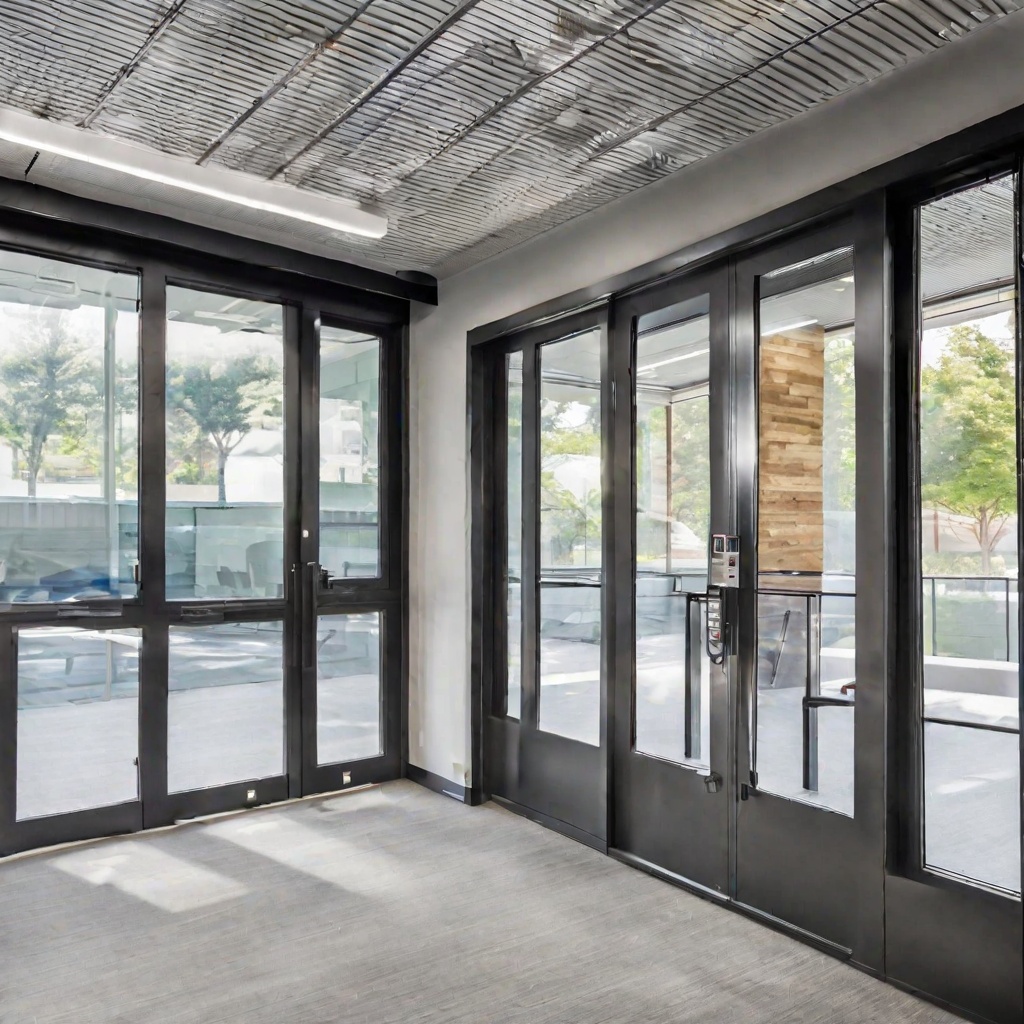Commercial spaces often face the challenge of optimizing natural light while managing heat gain through commercial windows and doors. Achieving the right balance is crucial for creating a comfortable and energy-efficient environment. In this article, we will explore the various strategies and technologies available to strike the perfect equilibrium between harnessing natural light and mitigating excessive heat.
Understanding the Importance of Commercial Windows and Doors
Natural light is not just aesthetically pleasing; it also has a profound impact on the well-being and productivity of occupants in commercial buildings. Exposure to natural light has been linked to improved mood, enhanced focus, and increased energy levels. Therefore, it’s essential to maximize the ingress of daylight into commercial spaces.
The Challenge of Heat Gain
While natural light is desirable, excessive heat gain can lead to discomfort and increased cooling costs. In commercial settings, where large expanses of doors and windows are common, finding ways to mitigate heat gain becomes imperative. Balancing the benefits of natural light with the challenges of heat management is a delicate task that requires thoughtful design and innovative solutions.
Smart Glass Technologies
One of the most effective ways to balance natural light and heat gain is through the use of smart glass technologies. Electrochromic and thermochromic glass can dynamically control the amount of light and heat entering a space. The electrochromic glass allows users to tint or clear the glass with the flick of a switch, while the thermochromic glass responds to temperature changes, darkening in response to heat. These technologies offer a dynamic and responsive solution to the ever-changing conditions outside.
Low-E Coatings
Low-emissivity (Low-E) coatings are another tool in the arsenal of architects and designers striving to balance natural light and heat gain. These coatings are applied to the glass surface to reduce the amount of infrared and ultraviolet light that enters a building while allowing visible light to pass through. This helps in maintaining a comfortable indoor temperature without compromising on the benefits of natural light.
Strategic Window Placement
Proper window placement is a fundamental aspect of achieving the desired balance between natural light and heat gain. By strategically positioning windows, architects can optimize the ingress of daylight while minimizing direct exposure to intense sunlight. This approach requires a thorough understanding of the building’s orientation and the path of the sun throughout the day.
Utilizing External Shading Devices
External shading devices, such as louvers, awnings, and solar shades, can be effective in preventing excessive heat gain. These elements are installed on the exterior of doors and windows to block or diffuse sunlight before it reaches the glass. By doing so, they help maintain a comfortable indoor temperature and reduce the reliance on mechanical cooling systems.
High-performance Glazing Systems
Investing in high-performance glazing systems can significantly contribute to achieving the desired balance. Double-glazed or triple-glazed windows with insulated glass units provide better thermal insulation, reducing heat transfer between the interior and exterior. This enhances energy efficiency and minimizes the impact of external temperature fluctuations.
Integration of Building Automation Systems
Building Automation Systems (BAS) play a crucial role in optimizing the balance between natural light and heat gain. These systems can be programmed to adjust window shading, blinds, or smart glass in response to changing environmental conditions. By automating these adjustments, BAS ensures that the building remains energy-efficient and comfortable throughout the day.
Selecting Appropriate Window and Door Materials
The choice of materials for commercial windows and doors also influences the balance between natural light and heat gain. Materials with high thermal resistance, such as fiberglass and vinyl, help minimize heat transfer. Additionally, selecting doors and windows with insulated frames contributes to overall energy efficiency and thermal comfort.
Daylight Modeling and Simulation
Before finalizing the design of commercial spaces, architects can use daylight modeling and simulation tools to predict the distribution of natural light and assess potential heat gain. These tools allow designers to experiment with various design configurations and choose the optimal solution that maximizes daylight while minimizing unwanted thermal effects.
Green Roofs and Exterior Landscaping
Green roofs and well-designed exterior landscaping can contribute to reducing heat gain by providing shade and insulation. Plants and trees strategically placed around a building can act as natural barriers against direct sunlight, creating a microclimate that mitigates heat. Moreover, green roofs enhance the overall sustainability of the building by promoting biodiversity and reducing the urban heat island effect.
Regular Maintenance and Upkeep
To ensure continued effectiveness in balancing natural light and heat gain, it’s essential to perform regular maintenance on windows, doors, and shading devices. Cleaning and inspecting the glass, replacing worn-out weatherstripping, and addressing any issues with shading systems are crucial steps in preserving the efficiency of the building envelope.
Conclusion
In the quest for energy-efficient and comfortable commercial spaces, finding the right balance between natural light and heat gain is paramount. Through the strategic integration of technologies like smart glass, low-E coatings, and high-performance glazing systems, coupled with thoughtful design considerations and automation through building automation systems, architects and designers can create environments that prioritize occupant well-being and sustainability. By embracing a holistic approach that considers window placement, external shading devices, and green landscaping, commercial buildings can achieve an optimal equilibrium, harnessing the benefits of natural light while minimizing the challenges posed by heat gain.
